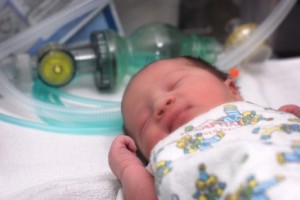Spastic Diplegia Cerebral Palsy

Spastic Diplegic Cerebral Palsy
Spastic diplegia is a form of cerebral palsy where both of the legs have abnormal stiffness. The legs are often more affected than the upper extremities, but spastic diplegia often affects the hips and/or pelvis as well.
Spastic means stiff or contracted. The word Diplegia breaks down into “di,” meaning two, and “plegia,” the Latin word for weakness. Therefore, spastic diplegia means stiff or contracted muscles affecting two extremities causing weakness. Spastic Diplegia is sometimes also called paraplegic cerebral palsy.
There are other causes of spastic diplegia other than cerebral palsy. Some forms of spastic diplegia are hereditary. You can differentiate the two by several factors:
- The age the patient begins to show symptoms of spastic diplegia.
- A victim’s past clinical history.
- Recorded problems at the time of birth or during pregnancy.
- The presence of genetic factors.
People suffering from hereditary spastic diplegia typically have a family history of the condition and don’t show symptoms until late childhood or middle age. People suffering from the cerebral palsy form of spastic diplegia are usually diagnosed with the condition as children. Cerebral palsy spastic diplegia is the result of brain damage and mainly affects the legs. The damage involves brain malformations around the ventricles, which are the fluid filled spaces. Typically, a lack of oxygen during brain formation causes a development failure in the pyramidal tracts. MRI’s can easily detect these malformed areas which are called periventricular leukomalacias.
Little’s Disease and Spastic Diplegia
Spastic diplegia was originally called “Little’s Disease.” The disease was named for William Little, a British surgeon who first described the disorder in the 19th century. The children he observed with the condition had stiffness in the legs and/or arms which did not progress in severity as they aged. Little’s disease was soon recognized to be a disorder (or group of disorders) rather than a disease, and the name changed to spastic diplegia.
Symptoms of Spastic Diplegia
Regardless of what you call the disorder, spastic diplegia, paraplegic CP or Little’s disease; the symptoms are the same. Both legs of spastic diplegia victims are spastic, meaning stiff or contracted. The legs are weak and walking is difficult. People with spastic diplegia often walk with a “scissor gait” caused by tight muscles in the hips and legs. The muscles become so tight the legs want to turn inward and sometimes cross over each other at the knees. A spastic diplegia victim’s arm, face and neck muscles are usually affected to a lesser degree than the legs. Outside of the physical characteristics of spastic diplegia, the disorder is sometimes accompanied by intellectual disability.
Treatments for Spastic Diplegia Cerebral Palsy
Statistics show spasticity affects 80% of people with cerebral palsy and causes many problems for sufferers of the disorder. In growing children, muscle stiffness inhibits the longitudinal growth of the muscle. This is especially bad because it causes orthopedic deformities and muscle contractures, where the muscle locks into place permanently.
Spastic symptoms of cerebral palsy are usually treated with a combination of drugs, physical therapy, braces, and if needed, orthopedic surgery. However a relatively new surgery is being performed called selected dorsal rhizotomy (SDR). The surgery works best on young children, from 2 to 4 years of age, but can be beneficial for older children and some adults. SDR typically brings better results for people suffering only from spastic diplegia and not spastic quadriplegia (where there is significant spasticity in both the arms and legs).
SDR works to prevent the development of deformities by cutting nerve fibers in the spinal cord. While this procedure is very serious, many experts say that a successful SDR surgery can improve leg function, as well as some speech and vision issues. The surgery also helps reduce the number of orthopedic surgeries a spastic diplegia victim could need in the future.
